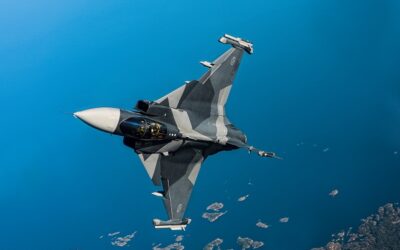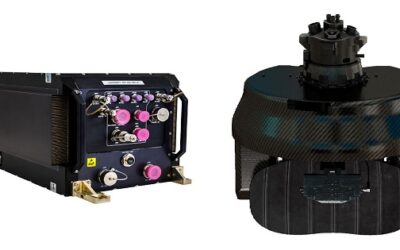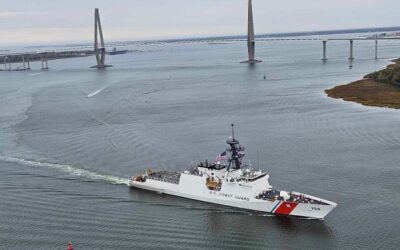Epsilor and Kissling Service exhibit together
Epsilor together with Kissling Service, an industry leading integrator of vehicle mounted defence systems, showcase Epsilor‘s 6T NATO battery (ELI-52526) on a Mercedes-Benz command vehicle in hall 6, booth #J517.
“The outlook for the future battlefield has changed dramatically during the last decade, impacting among others the requirements from armoured vehicles,” Large Format Battery Program Manager at Epsilor, Ori Kost, explains. “Today’s tanks and personnel carriers are expected to be highly mobile, easily manoeuvrable, have extended operational ranges, carry sophisticated optical equipment and provide superior protection.”
Current armoured vehicles carry with them advanced C4I (Command, Control, Communications, Computers & Intelligence) systems. These solutions include multi-weapon turret, situational awareness and driving support, active protection, and other systems which consume substantial amount of energy. Added to this, today’s vehicles need to support the energy needs of nearby infantry troops who carry a wide variety of electronic systems, all of which require charging.
Moreover, modern armoured fighting vehicles face complex fuel logistics and are required to reduce fuel consumption to extend operational range. New vehicles will have smaller internal combustion engines, which in turn require more frequent fuelling. Moreover, despite their smaller size the engines will be required to supply energy to a growing number of systems and dismounted units.
The new vehicles need also to be equipped with active defence systems which consume energy, rather than passive means. To this day most armoured vehicles rely on the old NATO standard 6T lead-acid 1kWh batteries. The old 6T lead-acid battery is beginning to be replaced in many armies by li-ion batteries which have up to X4 times higher energy density and perform much better in extreme conditions.
Today’s Infantry Combat Vehicles and MBTs require substantially more energy than lead-acid batteries can provide. Adding additional lead/acid batteries is not a feasible alternative as the volume allocated to batteries is restricted.
To operate in silent watch scenarios, such a vehicle must not turn on its engine for several hours to recharge its batteries. A lithium ion onboard battery, with a much higher energy density than the incumbent lead-acid, will substantially extend the duration of a silent watch operation.
To solve the problem of extended silent watch, armies have turned to diesel APUs. However, these auxiliary power units will soon be replaced by Li-Ion-based central energy banks which can provide the required energy for all on-board electronic systems. The new energy banks will replace the noisy generators which provide limited power and will enable missions to be executed in full silence for a full night.
In the long run, it is widely believed that armies will require even more power and energy for high-power weapon systems (e.g., laser guns) or hybrid drive powertrains: diesel and electric.
Several armed forces are already evaluating such hybrid vehicles. These vehicles will need much more powerful energy systems and the industry is already developing high voltage energy banks which will meet future requirements.
Eurosatory 2018 is showcasing the future of innovation across the land forces sector and MONCh (Moench Online News Channel at www.monch.com) brings together key developments from the show. For more information please see MILITARY TECHNOLOGY #06/2018, available at the show in hall 6, stand #D198.; and frequently check back for more NEWS FROM THE FLOOR.
@int:Epsilor and Kissling Service exhibit together
@txt:Epsilor together with Kissling Service, an industry leading integrator of vehicle mounted defence systems, showcase Epsilor’s 6T NATO battery (ELI-52526) on a Mercedes-Benz command vehicle in hall 6, booth #J517.
“The outlook for the future battlefield has changed dramatically during the last decade, impacting among others the requirements from armoured vehicles,” Large Format Battery Program Manager at Epsilor, Ori Kost, explains. “Today’s tanks and personnel carriers are expected to be highly mobile, easily manoeuvrable, have extended operational ranges, carry sophisticated optical equipment and provide superior protection.”
Current armoured vehicles carry with them advanced C4I (Command, Control, Communications, Computers & Intelligence) systems. These solutions include multi-weapon turret, situational awareness and driving support, active protection, and other systems which consume substantial amount of energy. Added to this, today’s vehicles need to support the energy needs of nearby infantry troops who carry a wide variety of electronic systems, all of which require charging.
Moreover, modern armoured fighting vehicles face complex fuel logistics and are required to reduce fuel consumption to extend operational range. New vehicles will have smaller internal combustion engines, which in turn require more frequent fuelling. Moreover, despite their smaller size the engines will be required to supply energy to a growing number of systems and dismounted units.
The new vehicles need also to be equipped with active defence systems which consume energy, rather than passive means. To this day most armoured vehicles rely on the old NATO standard 6T lead-acid 1kWh batteries. The old 6T lead-acid battery is beginning to be replaced in many armies by li-ion batteries which have up to X4 times higher energy density and perform much better in extreme conditions.
Today’s Infantry Combat Vehicles and MBTs require substantially more energy than lead-acid batteries can provide. Adding additional lead/acid batteries is not a feasible alternative as the volume allocated to batteries is restricted.
To operate in silent watch scenarios, such a vehicle must not turn on its engine for several hours to recharge its batteries. A lithium ion onboard battery, with a much higher energy density than the incumbent lead-acid, will substantially extend the duration of a silent watch operation.
To solve the problem of extended silent watch, armies have turned to diesel APUs. However, these auxiliary power units will soon be replaced by Li-Ion-based central energy banks which can provide the required energy for all on-board electronic systems. The new energy banks will replace the noisy generators which provide limited power and will enable missions to be executed in full silence for a full night.
In the long run, it is widely believed that armies will require even more power and energy for high-power weapon systems (e.g., laser guns) or hybrid drive powertrains: diesel and electric.
Several armed forces are already evaluating such hybrid vehicles. These vehicles will need much more powerful energy systems and the industry is already developing high voltage energy banks which will meet future requirements.
Eurosatory 2018 is showcasing the future of innovation across the land forces sector and MONCh (Moench Online News Channel at www.monch.com) brings together key developments from the show. For more information please see MILITARY TECHNOLOGY #06/2018, available at the show in hall 6, stand #D198.; and frequently check back for more NEWS FROM THE FLOOR.
@cap: (Image: Epsilor)

























